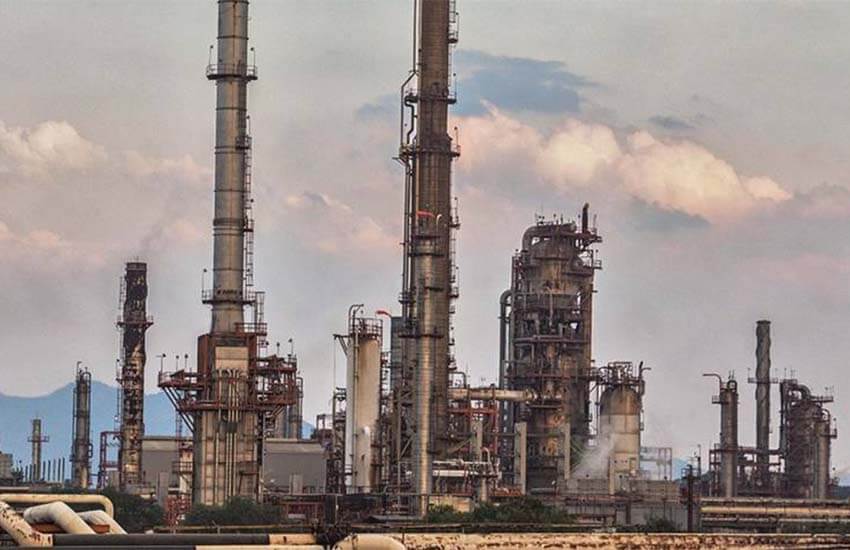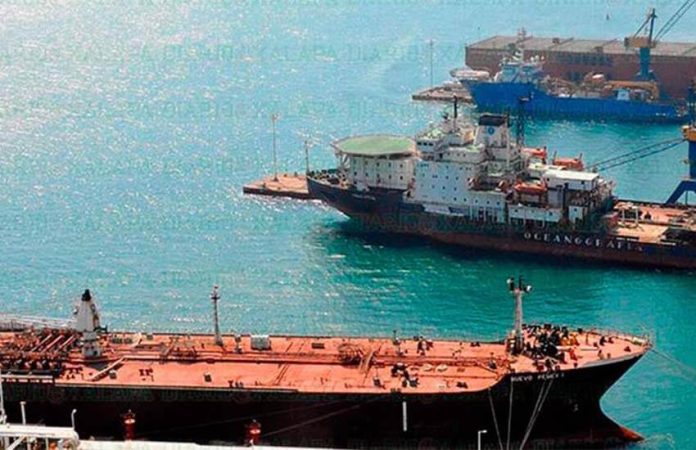Over 60 ships carrying an estimated 18 million barrels of fuel are currently waiting at sea off the Mexican coast as they are unable to unload due to a lack of storage space, according to a Bloomberg report.
Citing people familiar with the situation, the news agency reported Monday that the majority of the ships are transporting gasoline and diesel imported by Pemex, the state oil company. The vast majority of fuel Mexico imports comes from the United States.
It isn’t clear where off the coast of Mexico these waiting ships are located, or if they’re all located in the same area. However, the ship tracking site Marine Traffic’s live map currently shows the highest agglomeration of tanker ships off the coast of Mexico in the Gulf of Mexico, near the ports of Tuxpan and Coatzacoalcos — both in Veracruz — and also at the port of Tampico, Tamaulipas. All three ports are major receivers of gasoline imports.
The Bloomberg sources said that Pemex is covering the bulk of some US $2.4 million per day in delay fees charged by the ships. The tankers impose penalties of approximately $40,000 each for every day they are held up.

One source told Bloomberg that the current backlog is three times higher than normal. The news agency said “the congestion at sea is the result of several compounding factors in addition to a lack of available storage.”
Pemex has recently increased its fuel purchases in order to meet higher demand as the pandemic eases (even though Mexico is facing a worsening fifth wave) and to stock up before the worst of the hurricane season, Bloomberg said. The state oil company’s trading unit, PMI, and other fuel importers are making use of government subsidies to cheapen imports, it noted. The news agency also observed that increased imports are required because Mexico’s six refineries are operating at less than 50% capacity amid maintenance.
Pemex imported more fuel in June than any other month this year, with a total of approximately 888,000 barrels brought into the country. Gasoline purchases increased 17% compared to May while diesel imports were up 34%.
Felipe Pérez, a downstream director at financial information company S&P Global in Los Angeles, said it made sense for Pemex to “err on the side of caution to secure supplies because if a hurricane strikes the Gulf of Mexico, they could be in real trouble.”

Mexico’s domestic gasoline inventories are “a bit tight,” he said, noting that stock is only sufficient to meet nine or 10 days of demand. According to the Energy Information Administration, a United States government agency, the U.S. maintains inventories to meet 25.8 days of demand.
The approximately 60 ships waiting to unload are carrying enough fuel to meet about 60% of Mexico’s monthly demand. The Bloomberg sources said the last time so many oil tankers were sitting off the Mexican coast waiting to unload was in early 2020, when Pemex declared force majeure on import contracts due to plummeting demand for fuel amid the onset of the coronavirus pandemic.
